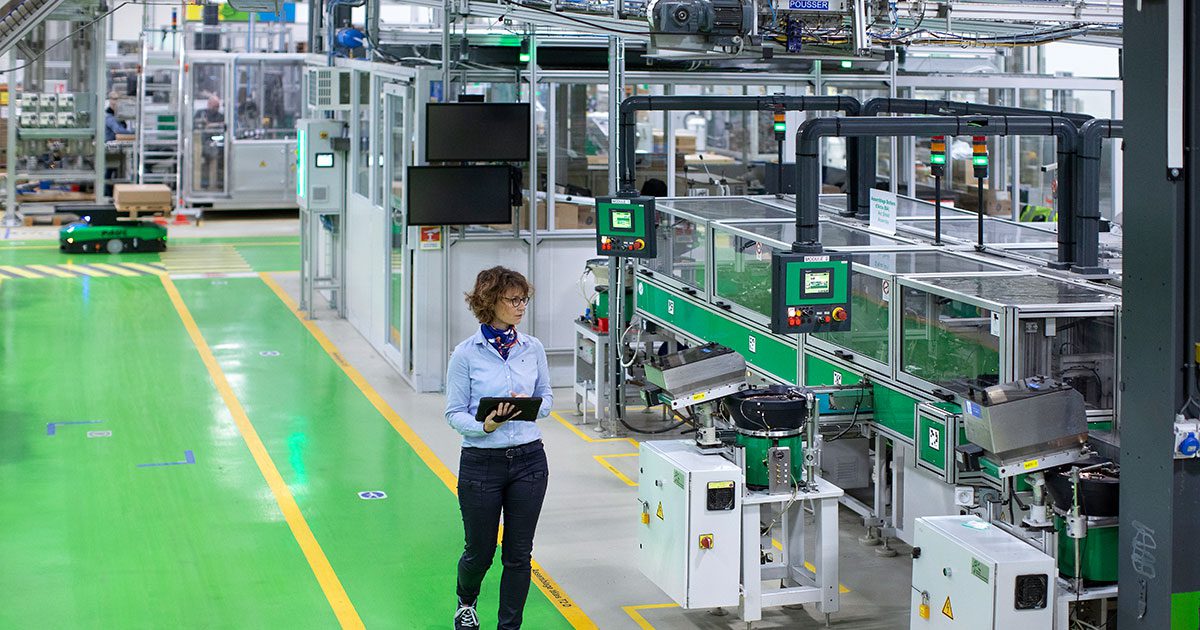Three best practices for implementing rapid global rollouts of digital transformation
Credit to Author: Sophie Borgne| Date: Mon, 02 Mar 2020 14:00:27 +0000
Co-authored with: Anthony Loy, Smart Factory Program Manager, Schneider Electric

Anthony is a digital enthusiast, always looking for the next opportunity to drive changes for sustainable results. He leads Schneider Electric’s Smart Factories program, addressing the digital transformation of the group’s 200+ factories, which are across five geographies. His background in various industries as manager, consultant and project manager gives him the experience to embrace challenges and deploy operational transformation aligned with business strategy.
In 2017 Schneider Electric launched an initiative to improve its supply chain – with one part of that being the Smart Factory Program which aimed to digitize 80 of our global factories. The Smart Factory Program is not a massive top down digitization project. It’s organized to engage our factory employees, and to focus on low cost/rapid implementation opportunities that drive performance. Today, three years later, we have over 10,000 customers and partners annually who visit our newly digitized plants in order to gain perspectives on how digitization can drive productivity and lower costs in their own plants.
 As we worked our way through the process, we learned much about how our digitized assets and technology solutions perform in the field, how our people adjusted to changes in responsibility, and how innovation can truly drive a company to reinvent itself.
As we worked our way through the process, we learned much about how our digitized assets and technology solutions perform in the field, how our people adjusted to changes in responsibility, and how innovation can truly drive a company to reinvent itself.
Best practices drive global efficiency gains
As we look back, three best practices in particular stand out as critical success factors for generating rapid payback on our investment:
- Understand the human aspect of digitization – any viable digitization strategy should consider how it impacts workers and employees. Digital transformation is a cultural issue as much as it is a technology issue. The hearts and minds of workers are only won when the proposed changes amount to facilitation of jobs. Job specific information must be easy to access and easy to interpret. In addition, some workers may fear that new technologies may render their roles obsolete. In truth, some traditional roles require realignment, but new technologies also create new roles and opportunities within plants and distribution centers. Automation and digitalization cannot survive without a human interface. Some of our biggest productivity gains came when employees on the factory floor began to discover the power of digitization for themselves. Their creative minds discovered new ways to simplify processes that were above and beyond any of our expected gains. We call these individuals augmented workers: they leave behind repetitive tasks in favor of high value-add activities.
- Develop a technology roadmap that is both firm and flexible – it sounds contradictory, but the firm corporate commitment to change should be balanced with flexibility when it comes to technology deployment. Key digitization decisions center around which technologies to adopt and the best way to accelerate the path to digitization-related business benefits. There may already be bits and pieces of digitization across different plants that have been adopted and applied. For this reason, when corporate teams and technology teams worked with local plant management, the roadmap consisted of two blended paths: a mandated rapid-payback “foundational portfolio” of applications that had already proven themselves during the initial factory site pilots and an optional “capabilities portfolio” of applications, that allowed each individual factory to choose which additional applications would best help them to reach their annual production target.
- Select a healthy mix of initial rollout candidates – we initially selected factories that had already attained a good level of automation and IT/OT convergence competencies, as this would help to accelerate the pace of the rollout and would also inspire those factories that were scheduled for Smart Factory transformation at a later time. We also made sure that our initial 11 sites consisted of both greenfield and brownfield environments and that those locations were geographically dispersed to include the Americas, Asia, Australia, and Europe. This provided a proof of concept that was truly global, applying itself across a diverse set of environments. Such an approach also enables much quicker acceptance of technology standardization that, in turn, lowers acquisition, distribution, and support costs.
An open platform architecture and collaboration with partners drives ease of integration and fast scaling
Across these three areas, Schneider Electric’s open EcoStruxure architecture, including the AVEVA software portfolio, provided a common element for linking intelligent devices, edge control and apps and analytics within a cybersecure envelope. This enabled easy integration of both Schneider Electric and third-party solutions that accelerated the decision-making processes across the factory value chain. As data is collected and analyzed, teams of managers and workers make more precise and faster decisions based on accurate data. This creates a snowball effect of benefits across our smart supply chain network.
architecture, including the AVEVA software portfolio, provided a common element for linking intelligent devices, edge control and apps and analytics within a cybersecure envelope. This enabled easy integration of both Schneider Electric and third-party solutions that accelerated the decision-making processes across the factory value chain. As data is collected and analyzed, teams of managers and workers make more precise and faster decisions based on accurate data. This creates a snowball effect of benefits across our smart supply chain network.
One of the key tools that has ensured the fast scaling of digital transformation across our Smart Factories is AVEVA’s Discrete Lean Management. It is an offer that was co-created by AVEVA and Schneider Electric through our strategic partnership and was scaled from one site in 2017 to now running in 70 sites worldwide. The results from the implementation of this technology at our Le Vaudreuil site in Normandy, France, are an increase in operational efficiency of seven percent, more than 10% energy savings, and a 30% reduction in the cost of maintenance in critical equipment.
Learn more about how your organization can leverage EcoStruxure to generate rapid return on investment in your smart factory.
The post Three best practices for implementing rapid global rollouts of digital transformation appeared first on Schneider Electric Blog.
http://blog.schneider-electric.com/feed/
